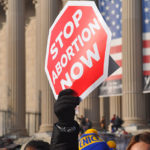
While regular church attendance has dropped slightly since 2019, church participation has remained “remarkably steady” throughout the pandemic.
By Aaron Earls
A few pre-COVID churchgoers may no longer be involved in your congregation. If someone was connected with your church at the start of the pandemic, however, chances are they’ve stuck with you through it all.
While regular church attendance has dropped slightly since 2019, church participation has remained “remarkably steady” throughout the pandemic, according to an analysis from Pew Research.
Pandemic stability
In July 2020, around 41% of Americans said they had participated in religious services in the past month, including both in-person and virtual attendance. In November 2022, 40% of Americans continued to say they participated in some way.
While the percentage participating has remained stable, the way they participate has shifted since the first months of the pandemic. In July 2020, 13% said they had attended services in person in the past month. And 36% had watched online or on TV. By November 2022, 28% attended in person and 24% watched.
In July 2020, 13% of Americans said they had attended religious services in person in the past month, while 36% had watched online or on TV. By November 2022, 28% attended and 24% watched, according to Pew Research. Click To TweetA significant portion of Americans, particularly Christians, say they have both attended in person and watched religious services in the past month. In November 2022, 16% of Americans attended in person exclusively, 12% only watched, and 12% both attended in person and watched online or on TV in the past month.
Among Christians in November 2022, 56% said they participated in some way with a church service in the past month, including 23% who only attended in person, 16% who only watched, and 18% who did both.
Stability across demographics
White evangelicals (72%) and Black Protestants (69%) were the only Christian groups where a majority said they were participating in church services. In November 2022, around 1 in 4 (26%) of each group said they attended in person and watched online or on TV in the past month. White evangelicals were more likely to say they only attended in person (26% v. 15%), while Black Protestants were more likely to say they only watched online or on TV (28% v. 19%).
Jewish Americans (44%), Hispanic Catholics (43%), white Catholics (43%), and mainline Protestants (39%) were less likely in November last year to say they had participated in religious services in some way in the previous month.
In November 2022, older Americans were more likely than younger Americans to say they participated in religious services in the previous month. Half of those 65 and older (49%) said they participated in person (18%), watching (16%), or both (15%). The overall percentage and the share participating in each way decreased with age. For those 50–64 years old, 45% participated in some way in the previous month. That drops to 37% of 30–49-year-olds and 28% of those 18–29.
Pandemic changes
While Pew found steady involvement throughout the COVID-19 pandemic, research also shows a drop in attendance since before the pandemic. In 2019, 33% of all U.S. adults said they attend religious services monthly or more. Last year, 30% said the same.
In 2019, 33% of all U.S. adults said they attend religious services monthly or more. Last year, 30% said the same, according to Pew Research. Click To TweetWhen asked specifically about their in-person religious service attendance compared to before the pandemic, 42% say they did not attend then or now, 31% attend about as often as before, 20% attend less often, and 7% attend more often now.
Among Christians, 42% say they attend in person about as often as before the pandemic, 25% attend less often, and 9% attend more. Black Protestants are the most likely to say they attend less often than before (35%) but are also the most likely to say they attend more now (15%). Another 32% of Black Protestants attend about as often as they did previously. White evangelicals are the most likely to say they attend about as often as before the pandemic (52%), while 23% attend less and 8% attend more. Among mainline Protestants 36% attend at a similar rate, 21% attend less, and 7% attend more.
While in-person attendance has declined, 15% of Americans say they now watch religious services online or on TV more than they did before the pandemic. Another 20% say they watch about as often, and 5% say less often.
For Christians, 26% say they watch about as often as before, 22% watch more, and 6% watch less. Black Protestants (35%) and white evangelicals (28%) are the most likely to say they watch online or on TV more now than before the pandemic.
Defining church attendance
A September 2021 Lifeway Research study found 45% of all Americans watched a Christian service online during the pandemic, including 15% who normally do not attend church in person.
The pandemic and the resulting change in habits caused many Americans to rethink their position on online church involvement and worship outside of a local church. In early 2020, 58% of Americans said worshiping alone or with one’s family is a valid replacement for regularly attending church, according to Lifeway Research’s State of Theology study. By 2022, that number jumped to 66%. Among Americans with evangelical beliefs, the percentage increased from 39% in 2020 to 54% in 2022.
46% of pastors say a regular churchgoer is based on in-person attendance, while 48% include online participation. Among churchgoers, 43% define regular churchgoing with in-person attendance, and 48% include online. Click To TweetAn additional Lifeway Research study found U.S. Protestant pastors were evenly split on whether someone must attend in person to qualify as a regular churchgoer or if online worshipers should be included.
Around 46% of pastors set the standard for a regular churchgoer on in-person attendance of some kind (37% say church services and 9% say any church activity). Another 48% say online attendance qualifies someone, with 24% saying only a worship service and 24% including any church activity.
Among those who regularly attend church services, 43% say a regular churchgoer is someone who attends in person, with 29% tying it exclusively to worship service attendance and 14% to any church activity. For 48%, online attendance should count, including 28% who include only church service and 20% who say any church activity.









